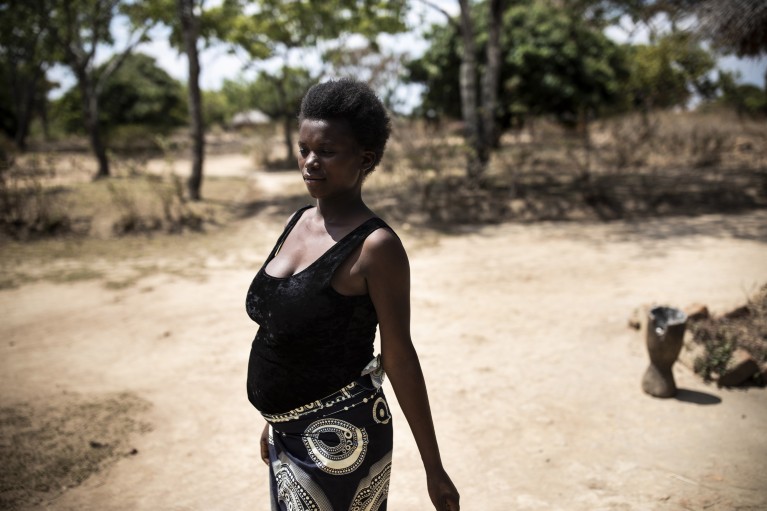
Anastasia Mboshe, a pregnant woman from a rural Zambian village, where malaria is endemic and commonly affects pregnant women.Credit: Toby Madden/Transaid
Malaria is particularly devastating during pregnancy. It increases the risk of gestational hypertension, anaemia and miscarriage for the mother, as well as preterm birth and low birthweight in the infant1.
The only way to prevent infection is monthly sulfadoxine-pyrimethamine (SP-IPTp). However, it can’t be used in the first trimester, when 60% of malaria infections occur1. “There really are no approved medicines to prevent malaria in first-trimester pregnancy,” says Wiweka Kaszubska, head of product development at Medicines for Malaria Venture (MMV) in Geneva, Switzerland.
The options for treatment were equally limited until late 2022, when the World Health Organization recommended artemether-lumefantrine (AL) for use during first-trimester pregnancy1. It took almost 25 years for this medicine to be recommended, mainly owing to a lack of evidence. “It's very difficult to collect data on safety in pregnancy, particularly in the first trimester,” explains Kaszubska.
One reason for the data gap is because pregnant women are systematically excluded from clinical trials for fear of causing harm. Instead, safety and efficacy data for use in pregnancy often come from inadvertent exposure, when someone takes the medicine before they realize they’re pregnant. Relying on this chance event delays recommendation for first-trimester use of malaria drugs by decades. A more systematic way of collecting data is needed.
Pregnancy registry and trial changes
To meet these needs, MMV is collaborating with the Liverpool School of Tropical Medicine in Kenya to launch a Malaria in Mothers and Babies (MiMBa) pregnancy registry (NCT04825782). The registry links women’s visits to the antenatal clinic and the malaria clinic, correctly attributing records about the safety of medicines to pregnancy. More than 60,000 women from Kenya and Burkina Faso have already joined.
“First, we capture what type of anti-malarial they were treated with,” says Kaszubska. “Then we record what potential effects the treatment had on the pregnancy and birth outcomes. Over time, the registry will provide data on the safety of malaria treatments during pregnancy.”
This type of registry helps measure the safety of approved medicines. For candidate medicines in development, researchers aim to incorporate data from developmental and reproductive toxicity (DART) studies earlier in the process. Historically, such preclinical studies are completed well after the start of clinical trials. By running them earlier, researchers can deprioritize new compounds with adverse safety signals, while also having more confidence to include pregnant women in early clinical studies of medicines that show a favorable profile in the DART studies.
MMV is completing DART studies as early as possible to ensure the drugs it supports will be available to pregnant women. “We're trying to enrich the pipeline with non-teratogenic, non-embryotoxic molecules,” says Kaszubska.
These initiatives are not only good news for people living in malaria-endemic regions, but they also have a role in the global efforts to increase the options for pregnant women the world over2. To make that happen, Kaszubska emphasizes that a variety of interventions are needed, from vaccines and other biologicals to small-molecule drugs, so that everyone has a suitable choice. “Our goal is to eliminate this devastating disease,” she says. “But to get there, we need to have options relevant to all women.”


